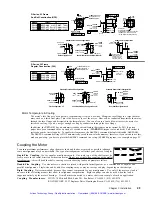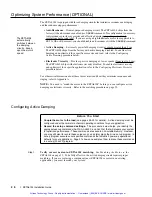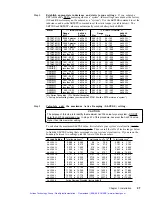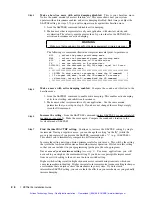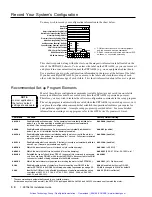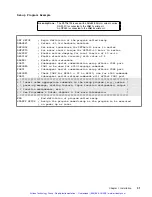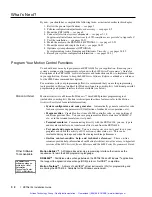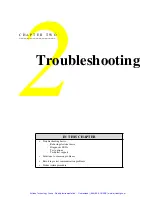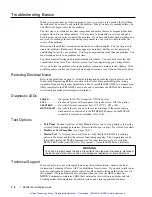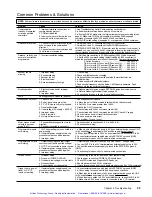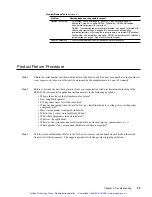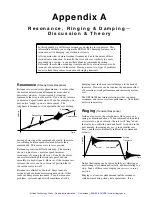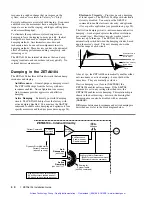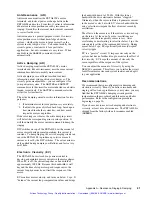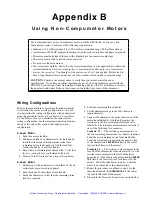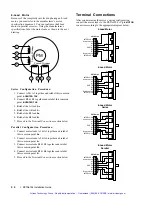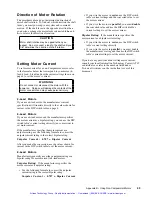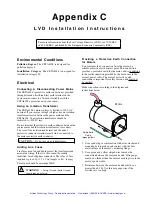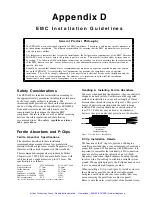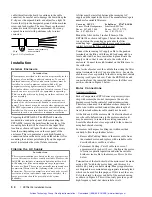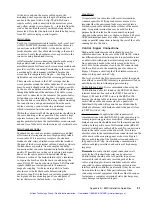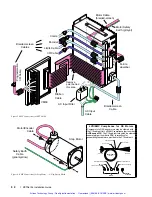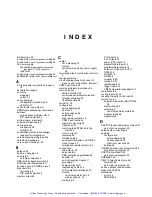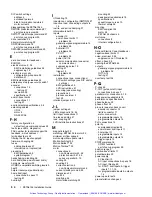
Appendix A
R e s o n a n c e , R i n g i n g & D a m p i n g
Ñ
D i s c u s s i o n & T h e o r y
In this appendix we will discuss resonance and ringing in step motors. This
information will help you configure the ZETA6104Õs damping featuresÑanti-
resonance, active damping, and electronic viscosity.
All step motors have natural resonant frequencies, due to the nature of their
mechanical construction. Internally, the rotor acts very similarly to a mass
suspended on a springÑit can oscillate about its commanded position.
Externally, the machine, mounting structure, and drive electronics can also be
resonant, and interact with the motor. During a move, two types of problems
can arise from these causes: resonance and ringing transients.
Resonance
(Steady State Response)
Resonance is a
steady state
phenomenonÑit occurs when
the motorÕs natural resonant frequencies are excited at
particular velocities. It is not caused by transient
commands that we give the motor. If you slowly increase
your motorÕs speed from zero to 20 rps, for example, you
may notice ÒroughÓ spots at certain speeds. The
roughness is resonance; it is depicted in the next drawing.
Time
Velocity
Commanded
Resonances
Actual
Instead of moving at the commanded velocity, the motor
is oscillating between speeds faster and slower than
commanded. This causes
error in rotor position
.
Resonance points can differ in intensity. The drawing
shows a typical caseÑas motor speed increases,
resonances of varying levels occur. Usually, the motor
can accelerate through the resonance point, and run
smoothly at a higher speed. However, if the resonance is
extreme, the rotor can be so far out of position that it
causes the motor to stall.
Resonance is affected by the load. Some loads are
resonant, and can make motor resonance worse. Other
loads can damp motor resonance. To solve resonance
problems, system designers will sometimes attach a
damping load, such as an inertial damper, to the back of
the motor. However, such a load has the unwanted effect
of decreasing overall performance, and increasing system
cost.
The ZETA6104 has internal electronics that can damp
resonance, and
increase
system performance. No external
devices are necessary.
Ringing
(Transient Response)
Inside a step motor, the rotor behaves like a mass on a
spring, as mentioned above. When commanded to quickly
accelerate to a given velocity, the rotor will ÒringÓ about
that velocity, oscillating back and forth. As shown in the
next drawing, the ringing
decays
Ñgrows smaller over
timeÑand the rotor eventually settles at the commanded
velocity.
Time
Velocity
Ringing
Transients
Commanded
Actual
Notice that ringing can be caused both by accelerating or
decelerating to a commanded velocity, and decelerating to a
stop. In any of these cases, ringing causes
error in rotor
position
.
Ringing is a
transient
phenomenon (unlike resonance,
which occurs during steady state operations). It is a
Artisan Technology Group - Quality Instrumentation ... Guaranteed | (888) 88-SOURCE | www.artisantg.com
Содержание Compumotor ZETA6104
Страница 45: ...Artisan Technology Group Quality Instrumentation Guaranteed 888 88 SOURCE www artisantg com...
Страница 49: ...Artisan Technology Group Quality Instrumentation Guaranteed 888 88 SOURCE www artisantg com...
Страница 53: ...Artisan Technology Group Quality Instrumentation Guaranteed 888 88 SOURCE www artisantg com...
Страница 63: ...Artisan Technology Group Quality Instrumentation Guaranteed 888 88 SOURCE www artisantg com...

